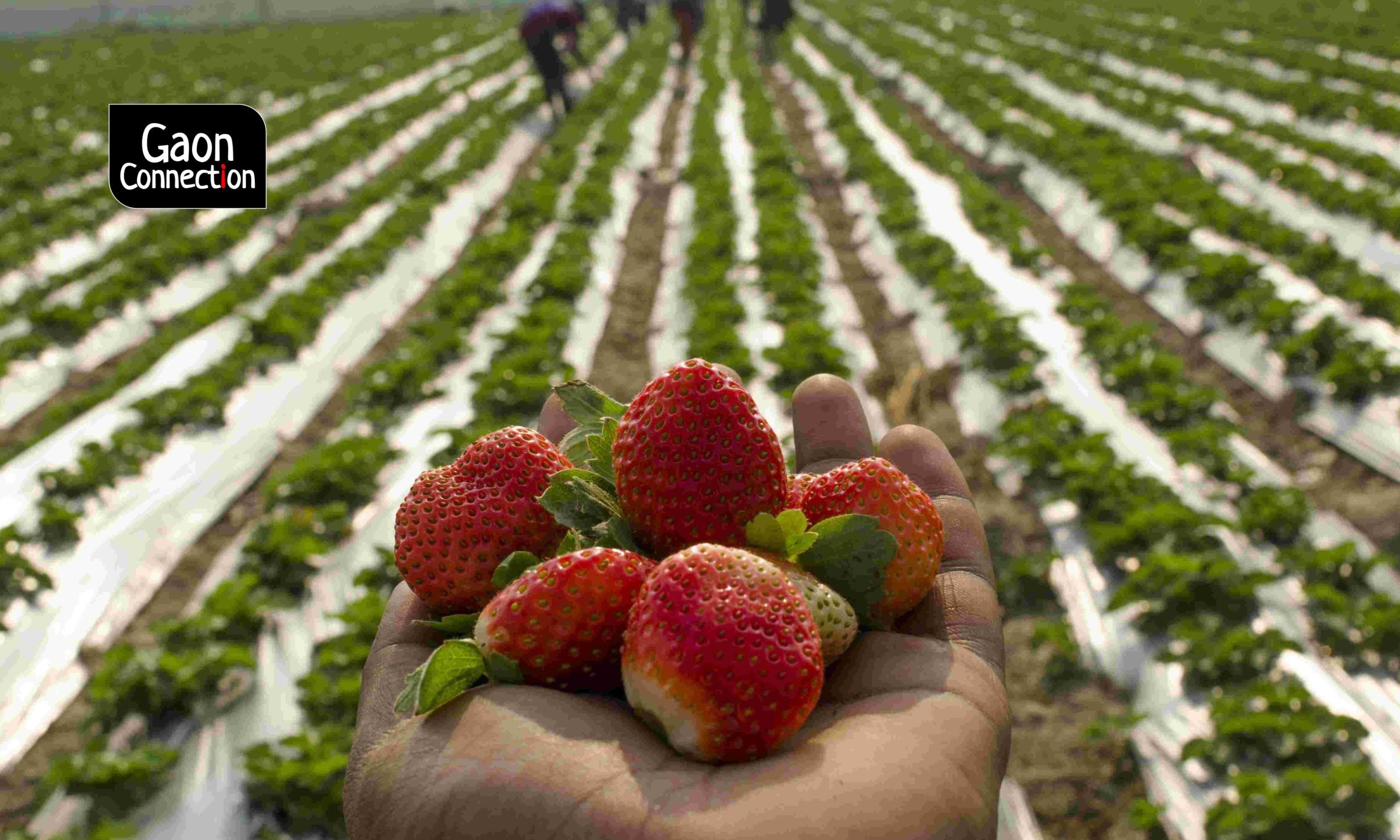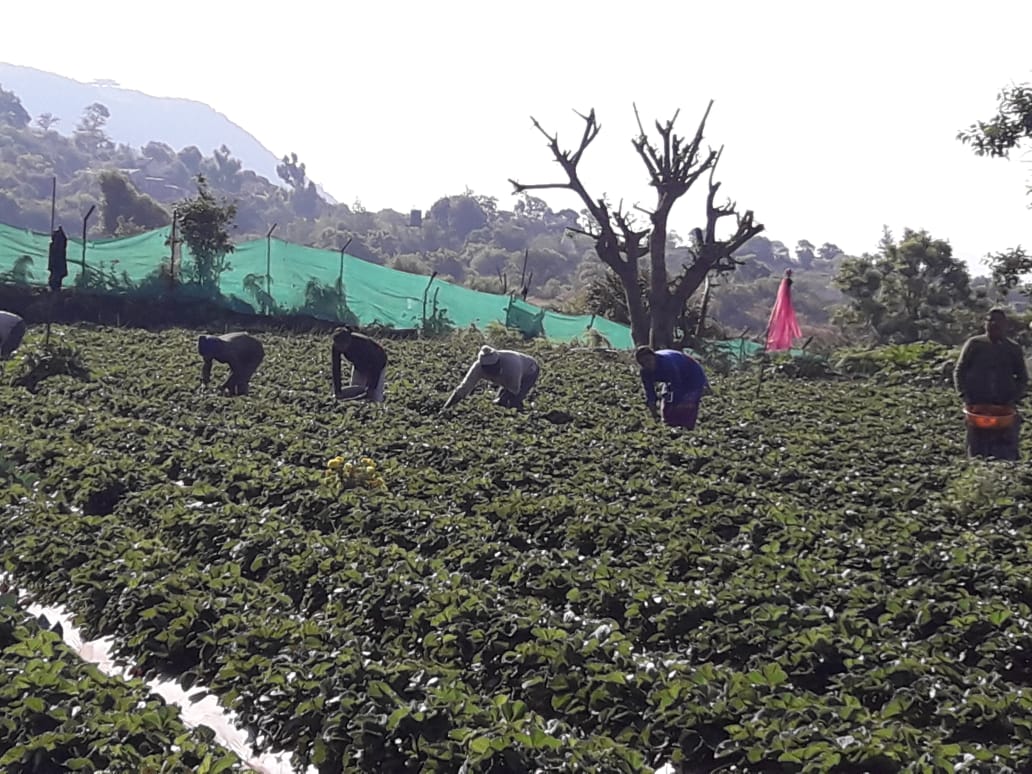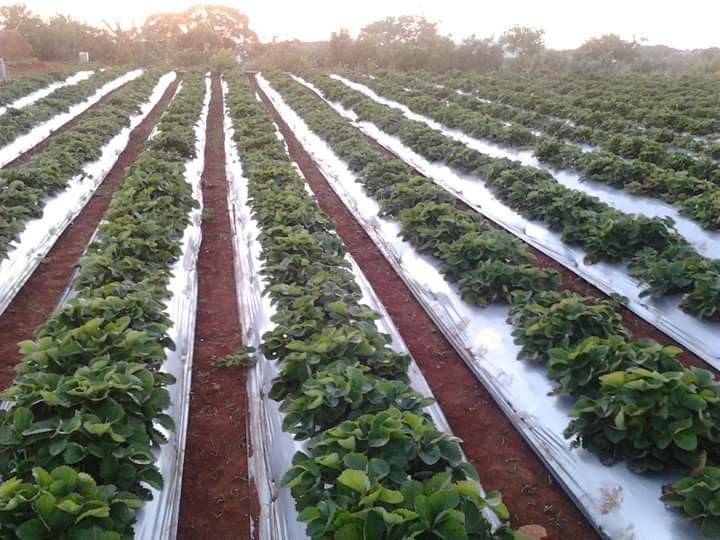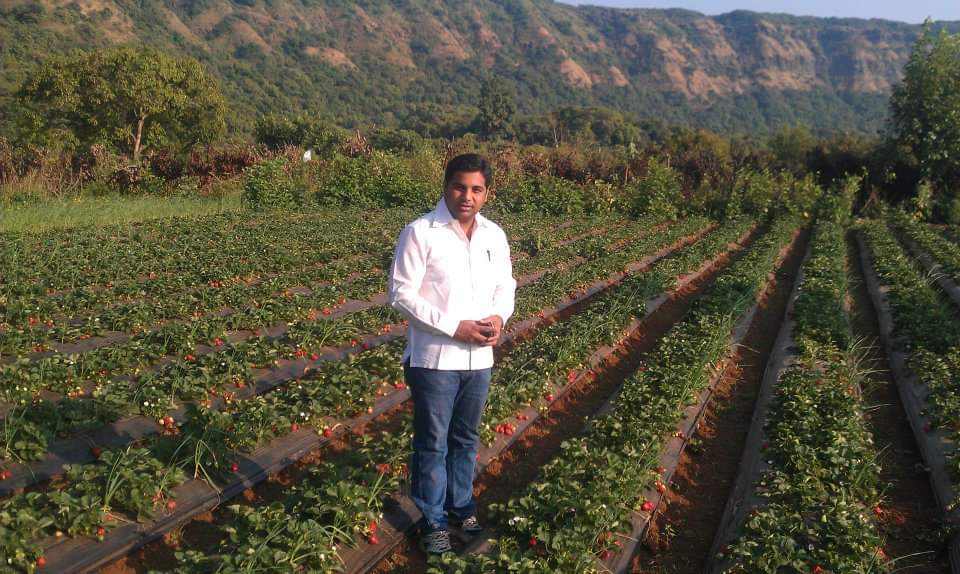Winter of discontent: COVID-19 pandemic and unseasonal rains slash strawberry production in Mahabaleshwar by 50%
Mahabaleshwar accounts for 80% of strawberry production in India. This year, the acreage under the popular fruit has shrunk from 2,000 hectares to hardly 800 hectares. Annual production is expected to be half of the usual 40,000 metric tonnes. Farmers blame it on COVID-19 and unseasonal rains.


Usually, in winters Shankar Jangam, 60, and his 35-year-old son Kishor, are busy overseeing the plucking of strawberries on their three acres of land in Taldev, 10 kilometres from Mahabaleshwar in Maharashtra, which accounts for 80 per cent of India’s strawberry output. They would have them packed by labourers and then send the neatly-stacked cartons of strawberries to Pune, Mumbai and other metro cities. The smaller fruits would be sent to processing units to be converted into jams and crushes. On an average, the family would earn a revenue of Rs 10 to Rs 12 lakh a year, of which half would be profit.
But this year has been a winter of discontent. Jangam’s family of six people, including his wife, daughter-in-law and two grandchildren, are worried about repaying the loan of Rs three lakh they had taken from the District Cooperative Bank last year. Their livelihood depends on a good yield to sustain them through the year.
Farmer Md Ali Nalband, 40, from Mahabaleshwar usually harvests 70 kilogrammes of strawberries a day. He told Gaon Connection that it was down to just eight to ten kg a day now. “I usually sell strawberries in Mumbai, Bengaluru and Hyderabad. How can I send such a small amount of strawberry to the market?” he asked. The reasons he attributes to the decline in production include the COVID-19 pandemic, late planting and unseasonal rains.

“Over six thousand farmers in Mahabaleshwar cultivate strawberry on around two thousand hectares of land and produce thirty to forty thousand metric tonnes of strawberry every year,” Vijaykumar Raut, deputy director, agriculture, Satara district, told Gaon Connection. This year, strawberries have been cultivated on hardly 700-800 hectares, due to reasons related to the COVID-19 lockdown, and he expects production will be down by 50 per cent.
The reduced harvest has also seen the price of strawberries in the retail market hit Rs 400 a kilogramme versus the usual winter price of Rs 150 to Rs 200 a kg.
From Australia to Mahabaleshwar
Mahabaleshwar strawberries got a Geographical Indication (GI) tag in 2013, which certifies that the produce is unique to a region or place. It is said that strawberries were brought to this hilly belt by the British from Australia in the 1830s.
Strawberry is grown in the hilly plateau of Mahabaleshwar-Panchgani, located in the Western Ghats. It is at an elevation of 1,353 metres above mean sea level and is surrounded by valleys. The temperature in winter — a day time reading of about 20 degrees and a nighttime temperature of 8 degrees Celsius and sufficient humidity during winter best suits the sweet-sharp strawberry.
Travel down this terrain and you can see bright red strawberries weighing down bushes covered with green cloth for temperature control. The labourers pluck ripe berries, careful to not damage them.

According to the strawberry farmers, the COVID-19 crisis was the first blow to their livelihood. In April, Jangam’s farm was bursting with blushing pink-red strawberries — he harvested between 200 and 300 kg every day till June. The fruits from May and June usually go to processing centres, as they are smaller. After lockdown began in the end of March, he lost out on his first customers — the summer tourists. He could have sent it to metros, where he would get a good price, but transport facilities came to a grinding halt. “The processing units were not working, and I had a loan of three lakh rupees to deal with,” he narrated to Gaon Connection.
The second blow was the unseasonal rains in the months of September and October due to prolonged southwest monsoon this year. The same unseasonal rains that took a toll on onion and potato farmers hit the strawberry cultivators too. Strawberry is a delicate fruit, and due to this rain, the developing fruit got damaged, and this resulted in a shortfall in production, said Raut.
Saplings from Europe, the Mediterranean and America
The life of a Mahabaleshwar strawberry begins when the three major strawberry growers’ groups — Namdev Umaji Private Limited, Mahabaleshwar Taluka Phale Phule Bhajipala Kharedi Vikri Sangh and Vasundhara Swayam Rojgar Kharedi Vikri Sangh — annually import mother plants from Italy, Spain, and California by the end of May or the first week of June.
This year, that took a hit as international flights were not functional due to lockdown. The plants arrived a month later than usual. “The cost of mother plants also went up to forty rupees from thirty, due to the lockdown and difference in exchange rate,” Shailesh Jadhav who runs Vasundhara Swayam Rojgar Kharedi Vikri Sangh, a collective of strawberry farmers, told Gaon Connection.

Once mother plants are planted in nurseries, it takes them two to three months to produce daughter plants, which are sold to horticulturists at the rate of Rs 7 to Rs 10 a sapling. The heavy rains in September and October put paid to this planting schedule, Jadhav said.
The cost of daughter saplings went up to Rs 12 a piece. “I planted around ten thousand daughter saplings in the last week of September, half of which perished in the rainfall. I had to replant them, spending more money. Also, it makes no sense to send such a small amount of strawberry to the market or outstation,” Nalband told Gaon Connection.
This affected the harvest, which usually begins in November. This year, sporadic harvesting only began in December; so farmers lost out on sales during this season. Many ice-cream stores which sell real strawberry ice-cream in the winters found themselves telling customers they were yet to receive stock of the fruit.
How lockdown hit strawberry harvests
Babasaheb Bhilare, president of the 3,000-member Strawberry Growers Association (SGA) in Mahabaleshwar told Gaon Connection that production in the last season, “was low due to hailstorm and excessive rainfall in the hill station in March. Added to this, farmers could not sell their produce from March to June due to the pandemic”.
Quite a few farmers raising strawberries opened the gates of the farm to cattle for grazing, since demand suddenly fell, and it made no sense to spend money on plucking the fruits. “The farmers are still reeling under loans taken last year,” Bhilare said.

Because of this, most farmers chose to cut down their planting area by 30-40 per cent as they were wary if tourists would at all visit the hill station, and if they would manage sales. “But we see there is a huge demand for the fruit this year. Hopefully, farmers will plant strawberries in the usual acreage next year,” Bhilare added.
Jangam was among those who took a calculated risk and planted only on one acre, and not three. “I have planted only ten thousand saplings, instead of the usually thirty to forty thousand I do. I took a further loan of one lakh rupees to survive. Unfortunately, ten per cent of these saplings were damaged due to the cloud cover. My decision to cut down acreage has been proven right.”
Like Jangam, Nalband has been cultivating strawberries on his three acres of land for years now. “I produce over fifty metric tonnes of strawberry every year. Production is yet to begin full-swing this year,” he told Gaon Connection.
Nalband usually invests about Rs 4.5 lakh an acre towards saplings, labour, mulching and fertilisers, and earns up to Rs nine lakh. This year, he foresees losses.
Another thing that rankles Nalband is that he usually employs 30-40 labourers during strawberry season. This time, he could hardly give work to 10 or 15 people. However, he is hopeful that before the season concludes in April, the circumstances turn around for farmers like him.
It’s no longer about individual farmers. Since Malabaleshwar is a major strawberry production centre, residents are into allied businesses such as transportation, jam and jelly production. When harvest fell, these inter-linked businesses too felt the pinch, and this collectively brought down the hill station’s overall income.
Silver lining
The hill station has over 30 processing units making jam, jelly, chocolates and syrups of strawberry. Collectively, they make over five metric tonnes of jam, syrup and jelly every season. “Generally, farmers sell their not-so-good fruit — the yield of the third flush, which comes in May — to these units. This time, they started sending them across even in the first or second flush, which is usually sold in the market. And so, at least the processing units are running fine,” said Bhilare.
For some years now, about 100 to 200 metric tonnes of strawberry have been exported. Said Bhilare: “We sell strawberries in markets at Pune, Mumbai, Bengaluru and Hyderabad. We have been exporting it to Malaysia. There is major demand again from all these places, and that is a good sign.”

